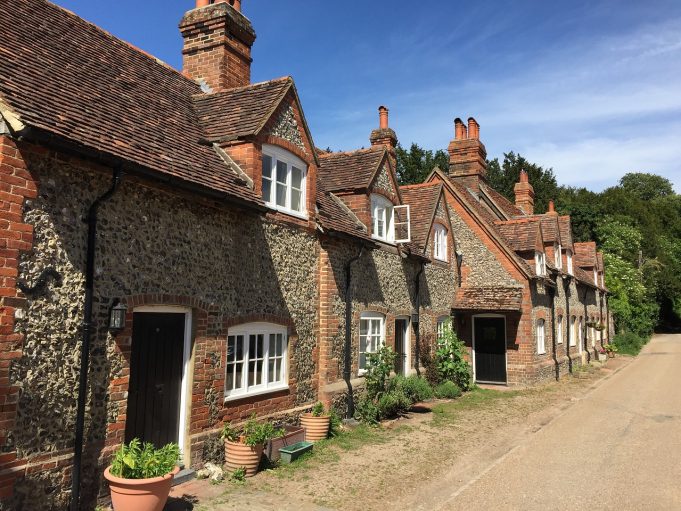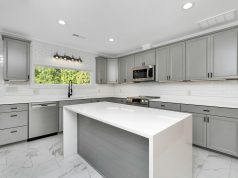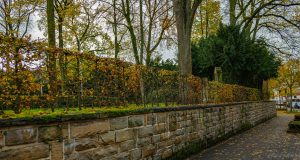In a world dominated by digital overload and fast-paced urban life, a quiet rebellion is unfolding across Britain’s homes. Enter Cottagecore—an aesthetic and lifestyle that celebrates simplicity, nostalgia, and the beauty of rural life. With roots in romanticised English countryside living, this decor movement has taken urban interiors by storm, blending vintage charm with heartfelt warmth. The rise of Cottagecore signals a collective yearning to reconnect with nature and traditional craftsmanship, even from a city flat.
From floral wallpaper to rustic wooden furniture, and from hand-stitched quilts to dried flower arrangements, British homes are being lovingly transformed into pastoral sanctuaries. And yes, Daffodil Decor—trusted Swansea painters and decorators—are playing their part in bringing a cottagecore aesthetic to local homes, brightening hallways and drawing rooms alike with soft, floral-inspired tones. Whether you’re living in a Victorian townhouse in London or a compact flat in Manchester, Cottagecore is proving that a rural escape can be created wherever you dwell. Let’s explore how this movement is redefining urban living, one cosy corner at a time.
Reviving Vintage Charm with Thoughtful Intent
One of the cornerstones of Cottagecore is the intentional use of vintage and antique elements, which offer both aesthetic and sentimental value. Urban homeowners are scouring markets and online shops for reclaimed items—think timeworn dressers, weathered farmhouse tables, and 1930s teacup sets. These pieces, often handed down through generations or sourced from local car boot sales, provide a sense of history and narrative that’s hard to replicate with modern mass-produced furniture.
Rather than designing with uniformity in mind, Cottagecore encourages a layered, lived-in look. It’s not unusual to see mismatched wooden chairs around a kitchen table or faded books stacked beside a patchwork armchair. The imperfections tell a story, which is precisely what makes the space feel so human and grounded. For city-dwellers who rarely slow down, surrounding themselves with items that evoke memory and craft becomes a grounding ritual.
In many ways, this turn to vintage is also a pushback against wastefulness. Reusing and restoring gives new life to old objects, making Cottagecore as much an environmental statement as an aesthetic one.
Nature Indoors: From Wildflowers to Botanical Prints
Perhaps the most defining aspect of the Cottagecore aesthetic is its reverence for nature. Urban environments, often short on greenery and filled with synthetic materials, are being transformed through the thoughtful inclusion of natural textures, patterns, and even scents. Dried lavender bundles, pressed flower frames, and terracotta pots filled with herbs have found pride of place in city flats.
Fabrics and wallpapers covered in roses, daisies, and vines lend rooms a garden-like serenity. Botanical prints—especially those styled after vintage encyclopaedias—are often used to adorn walls or inspire textile patterns. Homeowners are bringing the outdoors in, even if their only green space is a windowsill.
And with the rise of seasonal decorating, many are embracing Daffodil Decor in spring, swapping in yellow-and-white motifs to brighten their homes after a long, grey winter. This nod to traditional English flowers helps connect dwellers with the countryside’s changing rhythms, even if they’re surrounded by concrete.
Soft Lighting and Cosy Textiles for Hygge-Inspired Warmth
A key to making Cottagecore interiors feel welcoming is mastering the play of soft lighting and comforting textures. Gone are the stark, overhead LED lights in favour of warm-glow lamps, beeswax candles, and fairy lights. Urban homes are being cocooned in gentle illumination that mirrors the calm of twilight in the countryside.
Textiles are another hero of this trend. British households are layering up with hand-knit throws, lace-edged cushions, and linen curtains that let the light dance through. Quilts, often pieced together from mismatched fabric squares, sit proudly atop beds or draped over sofas. In colder months, wool blankets—sometimes even homemade—keep things toasty without sacrificing style.
There’s a deliberate sense of slowness in the way these elements come together. Nothing is rushed or overly curated. In fact, many Cottagecore homes feel like they’ve evolved over time, built lovingly with a patchwork of memories and tactile comfort.
DIY Details: Crafting as a Lifestyle Choice
Cottagecore is more than just a visual trend—it’s a mindset rooted in creation. Across British homes, urbanites are embracing DIY as a means of personalisation and mindfulness. Whether it’s baking sourdough, sewing curtains, or crafting dried flower wreaths, this movement encourages people to participate in their home’s design story.
The resurgence of handcrafting echoes the rural traditions of self-sufficiency. For many city-dwellers, setting aside time for creativity is a form of quiet resistance to the stress of digital life. Embroidery hoops hang on bedroom walls, cross-stitched samplers offer messages of hope, and homemade soaps are tucked into linen drawers.
This artisanal approach also serves to make homes feel distinctly individual. When every cushion cover or side table carries a bit of the homeowner’s labour and personality, even the smallest flat feels deeply personal. It’s a move away from cookie-cutter interiors and toward intentional, soulful spaces.
Neutral and Earthy Palettes with Natural Materials
Forget glossy monochrome schemes. Cottagecore thrives on a softer, more grounded palette—think sage greens, warm creams, soft blushes, and weathered browns. These colours not only evoke the natural world but also provide a sense of timeless calm, especially in the hustle and bustle of urban life.
Natural materials reign supreme. Exposed wooden beams (or faux beams, for city conversions), clay vases, rattan storage baskets, and linen tablecloths all contribute to the rustic aesthetic. These materials aren’t just beautiful—they age gracefully and add a sense of authenticity to the space.
Rather than opting for perfection, Cottagecore embraces character. A chipped enamel jug or a creaky wooden floor isn’t considered a flaw—it’s a feature. The colours and materials chosen all serve to foster a deeper emotional connection to the home and a slower, more appreciative lifestyle.
A Digital Detox: Creating Peace in a Tech-Saturated World
While Cottagecore isn’t inherently anti-technology, it certainly promotes a more mindful use of it. Many British homeowners are using the aesthetic to carve out sanctuary spaces within their homes that encourage rest and reflection. A reading nook with soft lighting and a stack of classics, or a breakfast table with fresh flowers and no devices, becomes a haven from the never-ending scroll.
TVs are hidden behind cabinet doors, computers are tucked away after work hours, and digital distractions are kept out of key areas such as the bedroom or sitting room. Instead of technology dominating every room, Cottagecore advocates for designated spaces that celebrate analogue pleasures—journaling, crafting, tea-drinking, or simply watching the rain from a cosy armchair.
It’s a small but significant shift in how we design homes—not around productivity, but around presence. In the urban chaos of daily life, these moments of quietude offer genuine reprieve.
Conclusion: A Return to Soulful Living in the Heart of the City
Cottagecore is not just a fleeting trend; it’s a reflection of a deeper cultural shift. As modern life grows more complex and tech-driven, many are turning inward—reimagining their homes as places of rest, craft, and nature-inspired beauty.
British homes, even those nestled in urban streetscapes, are embracing this rural revival with open arms. Through vintage finds, floral textiles, hand-crafted touches, and intentional calm, Cottagecore brings a sense of soulful living into spaces that were once defined by hustle.














